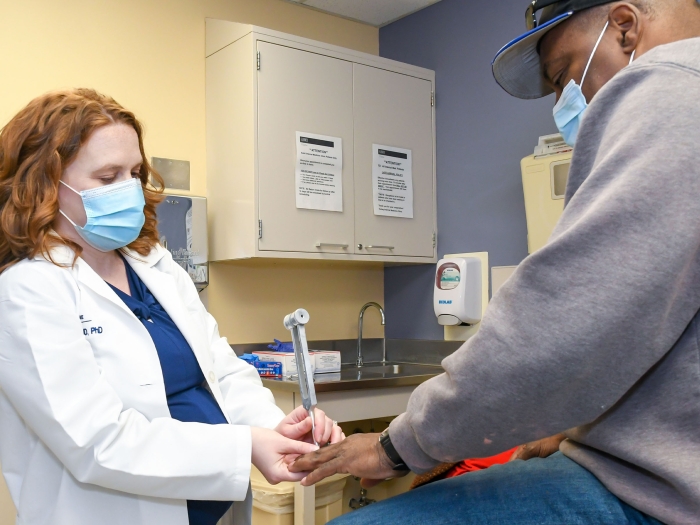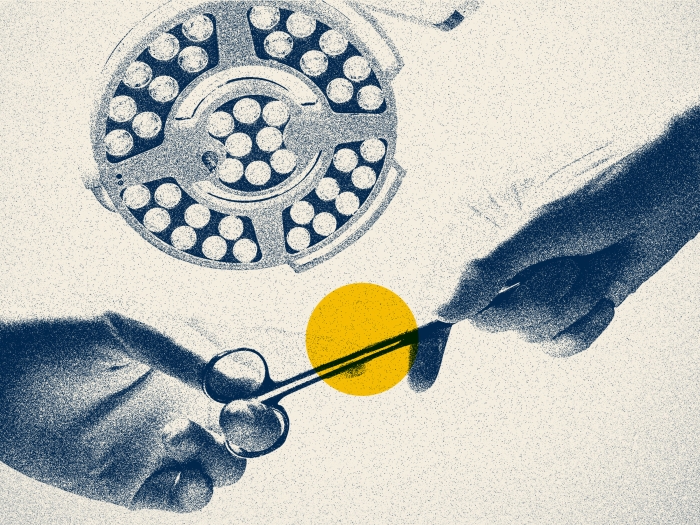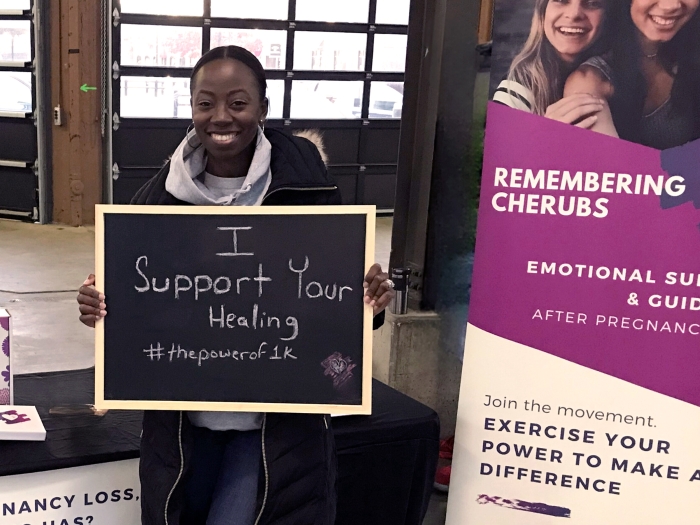An op-ed by a family medicine physician at Michigan Medicine.
1:46 PM
Author |

Editor's note: Information on the COVID-19 crisis is constantly changing, along with research being done by investigators everywhere. For the latest numbers and updates on this global pandemic, keep checking the CDC's website. For the most updated information from Michigan Medicine about the outbreak, visit the hospital's Coronavirus (COVID-19) webpage. For the full list of COVID-19 related articles from the Michigan Health and Health Lab, visit our COVID-19 coverage page.
In today's America, minority patients still have markedly worse health outcomes than white patients. The differences are greatest for black Americans: Compared to white patients, they are two to three times as likely to die of preventable heart disease and stroke. They also have higher rates of cancer, asthma, influenza, pneumonia, diabetes, HIV/AIDS and homicide. For many of them, structural racism and unequal treatment remain a contributing factor to disease and death.
I am a physician who studies health disparities and ways to improve health care delivery. My work focuses on people of color, including those who are black and indigenous. Improving health care delivery for these groups of people is a complicated and multi-layered task, but solutions exist. One of them is to increase the probability that minorities see doctors of their race or ethnicity, which I refer to as patient-provider racial and ethnic concordance. I have partnered with Prof. Edwin Lindo, a critical race theorist, to help explain why.
Building trust is key
In the current workforce, diversity among physicians is limited. That can lead to mistrust in doctor-patient relationships, even during routine checkups. Black patients, for instance, may feel more wary with a white doctor than a black doctor, and white doctors may feel less comfortable caring for minoritized patients. Mounting evidence suggests when physicians and patients share the same race or ethnicity, this improves time spent together, medication adherence, shared decision-making, wait times for treatment, cholesterol screening, patient understanding of cancer risk, and patient perceptions of treatment decisions. Not surprisingly, implicit bias from the physician is decreased.
A Stanford University study paired black men in Oakland, Calif., with either black or non-black doctors. The men seen by black physicians were more likely to engage with them, and even consent to preventive services like cardiovascular screenings and immunizations.
And, the study found that black doctors were more inclined to write detailed notes about their black patients. Those men who had the least trust in the medical system – and the least exposure to it – benefited the most from racial/ethnic concordance. The study estimates this approach could reduce the black-white mortality gap due to heart disease by 19%.
But what happened in Oakland is not going to happen anytime soon across the U.S. Based on the latest figures, white doctors make up 56% of the physician workforce, with Asian doctors at 17%. Just under 6% are Hispanic doctors. Only 5% are black doctors. Yet by 2042 – just over 20 years away – the combined minority population is set to become the majority in the U.S.
Based on those numbers, it will be difficult for the physician workforce to mirror the population in the near future. But given the benefits of a more diverse workforce, all educational and medical institutions – from grade school through completion of medical training – should invest in building a more diverse workforce.
In the meantime, there is another way to augment patient-provider racial/ethnic concordance: Increase the presence of minority providers who are part of a team-based model of care, including registered nurses, doulas, certified nurse midwives and nurse practitioners.
Another way to potentially improve care for minority patients is to better understand the effect of other forms of patient-provider social concordance, such as shared immigrant status, religion, LGBTQ+ status, socioeconomic background or disability. Discordant patient-provider interactions can be improved by training more culturally and structurally competent doctors.
Finding a minority doctor
Since the health care workforce won't reflect America's true diversity anytime soon, here are a few tips to find a minority physician:
Ask family or friends for recommendations. Look for online photos posted by your health care provider, or request someone who speaks your native language. Check out the new phone apps: HUED connects patients with minority physicians and offers patient reviews of them. Ayana matches users with licensed mental health therapists based not only on race and ethnicity but disability and LGBTQ+ status.
If seeing a doctor who's your race or ethnicity isn't an option, there are still ways you can advocate for yourself in health care settings:
- Write down your doctor's name. Just knowing that can build rapport and increase accountability.
- If you need a language interpreter, request one.
- Bring family or friends with you. Studies show that accompanying family and friends can serve as patient advocates and that their presence has a positive influence on building rapport and increasing patient participation according to doctors.
- Ask for a chaperone during physical exams. Like an interpreter, a patient request for a chaperone is widely accepted in today's health care system.
- Ask for and review documentation of your medical visit. You will need it in case of medical error, or if your physician wrongfully refuses to offer an appropriate service or treatment.
- If you have a negative experience with a doctor, say something. Speak with a supervisor. Do something: Join a patient advisory council. Even giving feedback anonymously through a suggestion box helps. That can be enough to give employers adequate grounds to act on racist or difficult physicians. Positive feedback also helps; minority physicians too are subject to discrimination.
- If you're black and pregnant, create a birthing plan and surround yourself with the best possible team of health care providers.
The ultimate goal, of course, is to achieve the best possible health outcomes for everyone, regardless of the race or ethnicity of patients and doctors. Minority patients should be able to trust their white physicians, and white physicians should be able to take equally good care of minoritized patients. Minoritized physicians should not bear the burden of eliminating health disparities. Until then? As long as structural racism exists within the health care industry, a minority patient should consider the benefits of a same-race or same-ethnicity doctor.
This article is republished from The Conversation under a Creative Commons license. Read the original article.

Explore a variety of healthcare news & stories by visiting the Health Lab home page for more articles.

Department of Communication at Michigan Medicine
Want top health & research news weekly? Sign up for Health Lab’s newsletters today!





